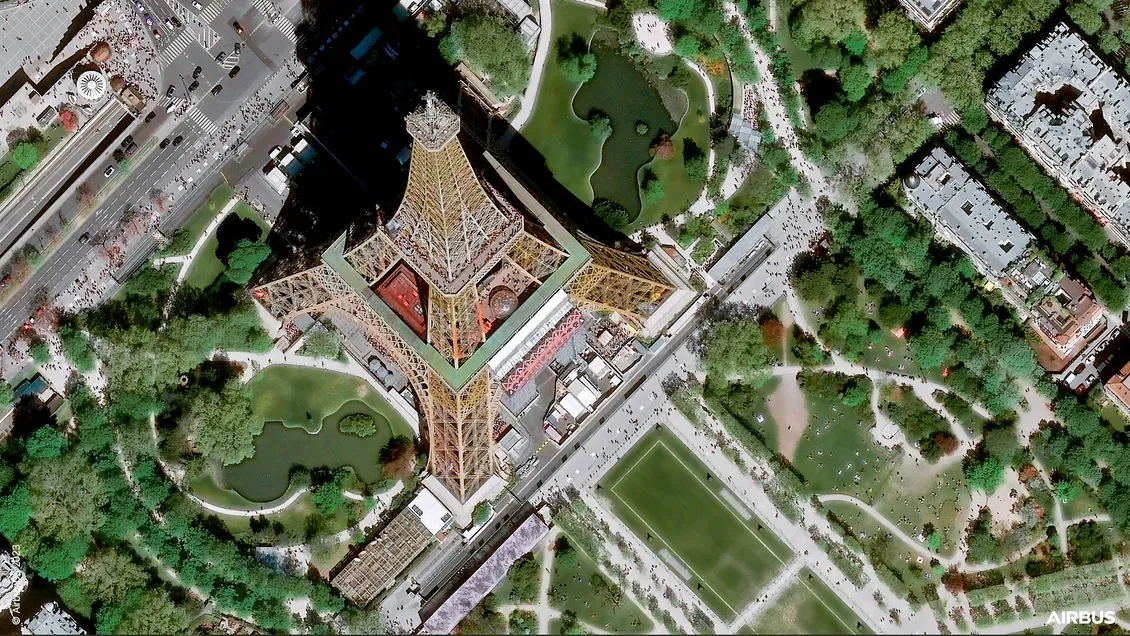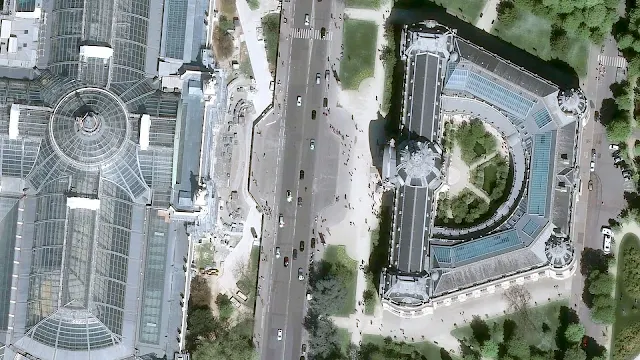
The Pléiades Neo Next programme is designed to build upon the success of the current Pléiades Neo constellation, which provides services to both government and commercial customers globally. With this expansion, Airbus aims to further improve the quality, performance, and reliability of its geo-Intelligence services and applications.
Airbus is a global leader in aerospace, including the design and manufacture of satellites for Earth observation and other purposes. The company operates the largest Earth observation constellation, which includes the Pléiades Neo, Pléiades, SPOT, DMC Constellation, and Vision-1 optical satellites, as well as the Radar Constellation consisting of TerraSAR-X, TanDEM-X, and PAZ.
 |
| Pléiades Neo HD15 over The Petit and Grand Palais in Paris. © Airbus DS 2022 |
The new programme Pléiades Neo Next is fully funded, manufactured, and operated by Airbus Defence and Space. It promises to offer full image capacity for a variety of sectors, including defence and intelligence, agriculture, environment, maritime, disaster response, mapping, location-based services, civil engineering, urban planning, and utilities. Users will have the ability to directly task the Airbus satellites shortly before they pass over the area of interest, with images being swiftly delivered either through Direct Receiving Stations on the ground or via the OneAtlas digital platform.
The collaboration between Pléiades Neo and Pléiades Neo Next satellites will ensure a higher revisit rate anywhere on Earth, potentially several times per day, along with the best spatial resolution and geolocation accuracy currently available in the market. The development of Pléiades Neo Next will also see improvements to the ground segment, the Direct Receiving Stations, and the OneAtlas platform, enhancing the capacity for imagery requests and optimizing the time between request, capture, and reception.
This expansion signifies Airbus's commitment to reinforcing its Earth observation capabilities and remaining at the forefront of geospatial technologies. The Airbus fleet, which includes both optical and radar satellite constellations, offers complementary services and applications with various resolutions, all-weather, and day-and-night capabilities. Additionally, Airbus is developing new capabilities based on stratospheric platforms.
Compared to other Earth observation satellites, the Pléiades Neo Next programme aims to provide unprecedented precision, reactivity, and acquisition capacity. It's designed to support a wide range of sectors including defense, intelligence, agriculture, environment, maritime, disaster response, and urban planning, among others. The combination of these features makes it a highly competitive option in the global Earth observation market.
The Pléiades Neo constellation is particularly noteworthy as it is entirely funded, manufactured, owned, and operated by Airbus, providing 30cm resolution images. This high-resolution imagery supports a wide range of applications, from environmental analysis and disaster management to urban planning.
The collaboration between Pléiades Neo and Pléiades Neo Next satellites will ensure a higher revisit rate anywhere on Earth, potentially several times per day, along with the best spatial resolution and geolocation accuracy currently available in the market. The development of Pléiades Neo Next will also see improvements to the ground segment, the Direct Receiving Stations, and the OneAtlas platform, enhancing the capacity for imagery requests and optimizing the time between request, capture, and reception.
This expansion signifies Airbus's commitment to reinforcing its Earth observation capabilities and remaining at the forefront of geospatial technologies. The Airbus fleet, which includes both optical and radar satellite constellations, offers complementary services and applications with various resolutions, all-weather, and day-and-night capabilities. Additionally, Airbus is developing new capabilities based on stratospheric platforms.
Compared to other Earth observation satellites, the Pléiades Neo Next programme aims to provide unprecedented precision, reactivity, and acquisition capacity. It's designed to support a wide range of sectors including defense, intelligence, agriculture, environment, maritime, disaster response, and urban planning, among others. The combination of these features makes it a highly competitive option in the global Earth observation market.
The Pléiades Neo constellation is particularly noteworthy as it is entirely funded, manufactured, owned, and operated by Airbus, providing 30cm resolution images. This high-resolution imagery supports a wide range of applications, from environmental analysis and disaster management to urban planning.













 IndianWeb2.com is an independent digital media platform for business, entrepreneurship, science, technology, startups, gadgets and climate change news & reviews.
IndianWeb2.com is an independent digital media platform for business, entrepreneurship, science, technology, startups, gadgets and climate change news & reviews.



